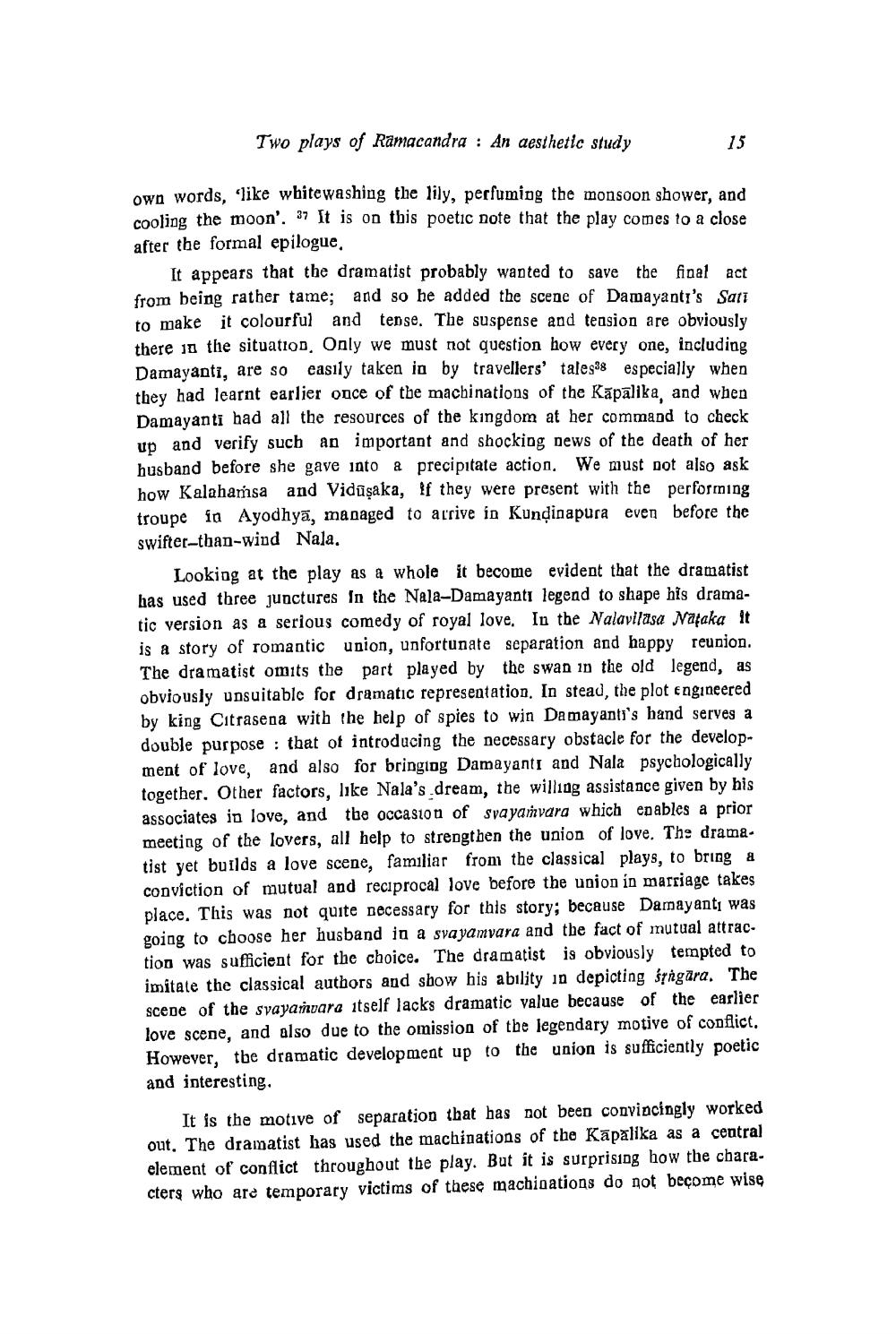________________
Two plays of Ramacandra : An aesthetic study
15
own words, like whitewashing the lily, perfuming the monsoon shower, and cooling the moon'. 37 It is on this poetic note that the play comes to a close after the formal epilogue,
It appears that the dramatist probably wanted to save the final act from being rather tame; and so he added the scene of Damayanti's Sati to make it colourful and tense. The suspense and teasion are obviously there is the situation. Only we must not question how every one, including Damayanti, are so easily taken in by travellers' tales38 especially when they had learnt earlier once of the machinations of the Kāpalika, and when Damayanti had all the resources of the kingdom at her command to check up and verify such an important and shocking news of the death of her husband before she gave into a precipitate action. We must not also ask how Kalahamsa and Vidūşaka, if they were present with the performing troupe in Ayodhya, managed to arrive in Kundinapura even before the swifter-than-wind Nala.
Looking at the play as a whole it become evident that the dramatist has used three junctures in the Nala-Damayanti legend to shape his dramatic version as a serious comedy of royal love. In the Nalavilasa Nafaka it is a story of romantic union, unfortunate separation and happy reunion. The dramatist omits the part played by the swan in the old legend, as obviously unsuitable for dramatic representation. In stead, the plot engineered by king Citrasena with the help of spies to win Damayanti's hand serves a double purpose : that of introducing the necessary obstacle for the development of love, and also for bringing Damayanti and Nala psychologically together. Other factors, like Nala's dream, the willing assistance given by his associates in love, and the occasion of Svayamvara which enables a prior meeting of the lovers, all help to strengthen the union of love. The drama. tist yet builds a love scene, familiar from the classical plays, to bring a conviction of mutual and reciprocal love before the union in marriage takes place. This was not quite necessary for this story; because Damayanti was going to choose her husband in a svayamvara and the fact of mutual attrac. tion was sufficient for the choice. The dramatist is obviously tempted to imitate the classical authors and show his ability in depicting śngära. The scene of the syayamvara itself lacks dramatic value because of the earlier love scene, and also due to the omission of the legendary motive of conflict. However, the dramatic development up to the union is sufficiently poetic and interesting.
It is the motive of separation that has not been convincingly worked out. The dramatist has used the machinations of the Kāpalika as a central element of conflict throughout the play. But it is surprising how the chara. cters who are temporary victims of these machinations do not become wise




